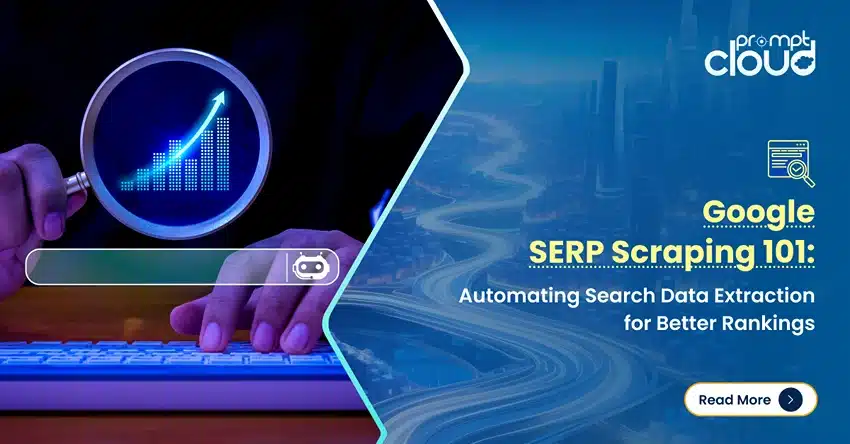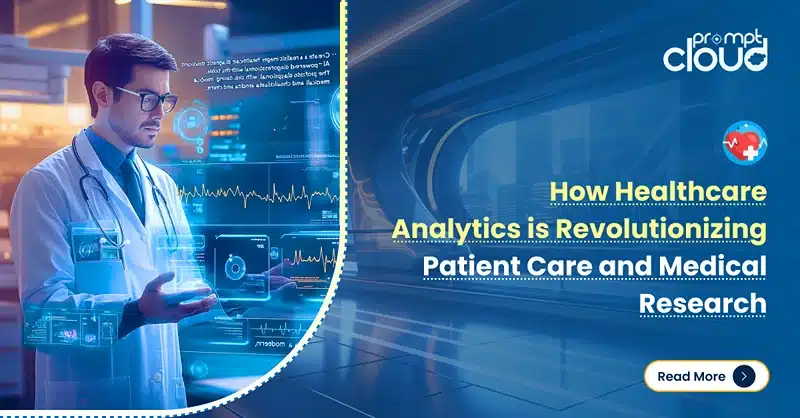
Healthcare is changing fast. Behind the scenes, healthcare analytics is driving much of that shift. It’s not just about managing hospital systems or crunching numbers. It’s about using real data to make smarter decisions—from diagnosis to treatment to long-term care planning.
With every lab result, prescription, and patient visit, we collect massive volumes of medical data. The difference now is that we can actually use it. Predictive models help flag risks before symptoms appear. Machine learning is guiding drug discovery. Hospitals are improving outcomes by acting on data they already have, but never leveraged.
This isn’t hype. It’s already happening. And it’s reshaping how we treat patients and approach medical research.
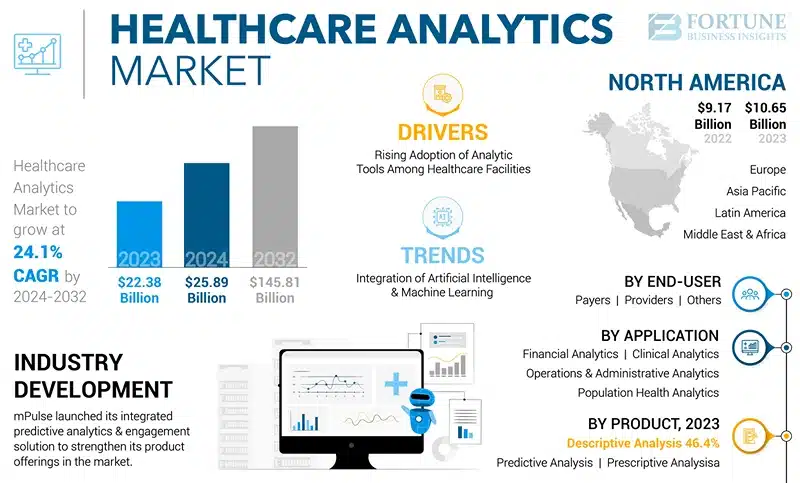
Image Source: Fortune Business Insights
How Healthcare Analytics Is Improving Patient Care Across the Board
From Reactive to Proactive: Early Detection and Personalized Treatment
Healthcare has always leaned on clinical expertise. But even the best intuition has limits. That’s where healthcare analytics is changing the game—it brings hard data into clinical decision-making in a way that’s fast, scalable, and deeply personalized.
Take early detection. When you feed years of patient history, lab trends, and risk profiles into a predictive model, patterns emerge—often before symptoms do. Hospitals are now using these models to flag high-risk patients for conditions like sepsis, heart failure, or even certain cancers. That’s not theory. It’s real, and it’s saving lives.
Then there’s treatment. We’re not just prescribing based on averages anymore. Medical data analytics allows providers to tailor care to the individual. We’re talking about treatment plans that account for genetic markers, lifestyle habits, and even how someone might respond to specific medications. Personalized medicine isn’t futuristic—it’s here, and analytics is what makes it possible.
Real-World Use: Predictive Tools in Action
Mount Sinai in New York is using machine learning to identify COVID-19 patients at risk of respiratory failure before their condition worsens. Another example comes from the Mayo Clinic, which developed algorithms that help catch signs of heart disease from standard EKGs, long before visible symptoms show up.
These aren’t pilot projects. These tools are in use, integrated into clinical workflows, and actively improving patient outcomes.
Smarter Care, Fewer Surprises
Beyond individual care, analytics helps manage care across systems. Think of hospitals predicting patient admission surges and adjusting staff schedules accordingly. Or emergency departments routing patients based on predicted wait times and urgency levels. Data analytics in healthcare is making it easier to plan ahead, avoid overload, and deliver better care without burning out the system.
It’s not perfect yet. But we’re past the early stages. Healthcare analytics is already changing how we treat people—not just when they’re sick, but long before that point.
How Medical Data Is Driving Better, Faster Research
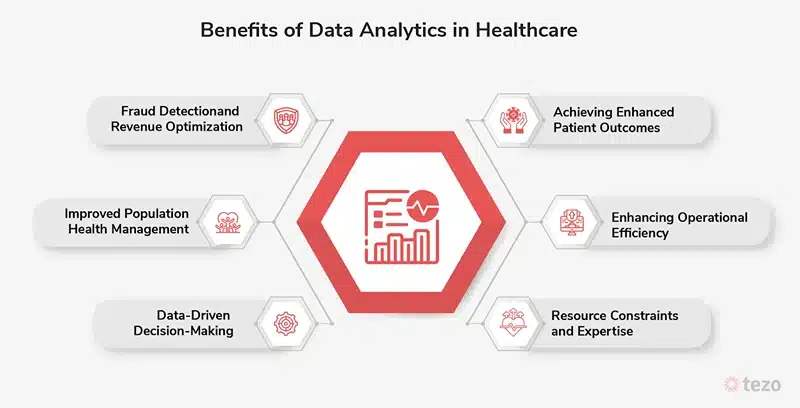
Image Source: tezo
Medical Research Is Finally Catching Up to the Data
For years, clinical research moved slower than it needed to. One of the biggest reasons? Lack of access to large-scale, reliable data. That’s changed.
Now, with digital health records, real-world evidence, and better tools to process information, medical data analytics is making research faster, more precise, and easier to scale. We’re seeing entire patient populations analyzed in ways that used to be impossible—leading to insights that actually hold up in the real world.
Researchers aren’t just looking at small trial groups anymore. They’re mining years of medical history, lab results, and treatment outcomes. This depth makes it easier to spot connections and avoid repeating the same dead-end studies.
Clinical Trials Are Smarter Than They Used to Be
One area where healthcare analytics is making a big impact is clinical trials. Finding the right patients, predicting how they’ll respond, and tracking their outcomes—it’s all easier when you’ve got solid data to work with.
Instead of waiting months to see whether a treatment works, researchers can use real-time health data to adjust trials on the fly. That saves money, avoids unnecessary risks, and helps get new treatments to patients faster.
It’s already happening. Pfizer and other major pharma companies are using predictive models to flag trial candidates based on health history, not just broad demographics. That leads to cleaner results and fewer failed trials.
Better Tools, Better Questions
Another shift? We’re asking better questions. Data analytics in the medical field lets researchers go beyond the basics—like whether a drug works—and dig into why, for whom, and under what conditions. That’s a big deal in fields like oncology or neurology, where small differences in biology can change everything.
Even public health is getting a lift. Universities and government labs are using analytics to track long-term disease trends, figure out what treatments stick, and understand which communities are falling through the cracks.
The Role of AI in Medical Research
Artificial intelligence is helping sort through huge datasets, spotting patterns humans would miss. But here’s the reality: AI is a tool, not the driver. It helps, but without strong data and domain expertise, it’s just noise. The real progress happens when data scientists and clinicians work together to interpret the results and apply them in context.
So while the hype around AI in medicine is everywhere, the value still depends on the quality of the data and the people behind the research.
The Real-World Challenges of Using Healthcare Analytics
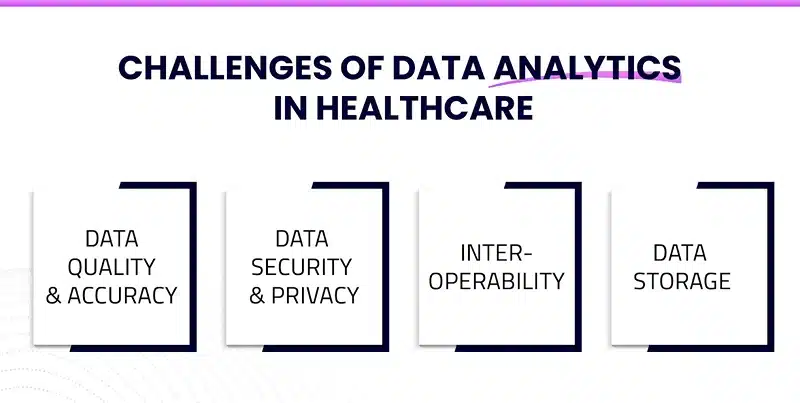
Image Source: xevensolutions
Data Privacy and Compliance Are a Constant Hurdle
Let’s start with the obvious: in healthcare, privacy is everything. Medical records are among the most sensitive data types out there, and the rules around them—HIPAA in the U.S., GDPR in Europe—are strict for a reason.
Any system that uses patient data has to be airtight. That means encryption, audit trails, role-based access, and more. But even with those protections in place, it’s a balancing act. Researchers and analysts need access to data to find patterns and build models. At the same time, patient identity must stay protected.
This gets even more complicated when data is being shared across institutions, or when cloud-based platforms are involved. Even anonymized datasets can carry re-identification risks if handled carelessly. So, while analytics has the power to change healthcare, it also forces everyone involved to be extremely careful with how that data is collected, stored, and used.
Fragmented Systems Slow Everything Down
Here’s another issue: hospitals and clinics often don’t talk to each other—at least not well. Data lives in different systems, formats, and structures. One hospital may use a modern EHR, another might still rely on paper notes that were scanned into PDFs. Even within a single organization, departments can operate in silos.
The result? Integrating all that information into a single, usable dataset is a massive task. Before you can analyze anything, you have to clean the data, normalize it, and figure out how it fits together. That eats up time, resources, and sometimes enthusiasm.
This isn’t just an IT headache—it affects the speed and quality of clinical insights. Healthcare data might hold the answer to a problem, but if the system isn’t built to connect the dots, those insights never see the light of day.
Cultural Resistance Is Still a Thing
Not every doctor or admin is ready to trust a predictive model. And that’s fair. If you’ve spent decades relying on experience and clinical instinct, having a machine suggest a diagnosis—or flag a treatment plan as risky—can feel like a challenge to your judgment.
Getting buy-in for healthcare analytics means proving its value, not just with case studies, but through daily impact. That might mean showing how an algorithm prevented a readmission. Or how a workload dashboard made staffing more manageable during a flu surge. It’s not about replacing humans. It’s about giving them better tools.
Skills Gap Slows Progress
Finally, there’s the question of who’s actually doing the work. Building, training, and maintaining these systems takes a mix of skills: data science, clinical knowledge, regulatory awareness. And right now, that combination is still rare.
Many healthcare systems don’t have in-house analytics teams with deep domain expertise. They rely on outside vendors or generalized IT staff. That works up to a point, but it slows down innovation and limits what’s possible long-term.
Until more healthcare professionals are trained in data—or more data experts understand healthcare—this gap will continue to be a bottleneck.
What’s Next for Healthcare Analytics: Trends That Are Already Taking Hold
AI-Driven Diagnostics Are Getting Sharper
We’re already seeing algorithms help identify diseases like skin cancer, diabetic retinopathy, and certain heart conditions with accuracy that rivals specialists. But the real shift isn’t just accuracy—it’s access. These tools don’t replace doctors, but they give frontline teams in smaller clinics or rural areas diagnostic support they’ve never had before.
With AI layered into healthcare analytics, you get decision support that works in real time. An abnormal pattern on an EKG? The system can flag it before the patient even leaves the room. That’s not just convenient—it changes outcomes.
And as more of these models are trained on large, diverse datasets, their reliability is only going to improve. The key will be validation, oversight, and making sure these tools are rolled out responsibly—not blindly.
Real-Time Health Monitoring Is Moving Out of the Hospital
Wearables used to be about counting steps. Now, they’re collecting heart rate, oxygen saturation, sleep cycles, and even signs of arrhythmias. That data, when connected to hospital systems through secure platforms, creates a real-time health feed.
Doctors can monitor chronic conditions like heart failure or diabetes remotely, catching changes before they escalate. For patients, it means fewer emergency visits. For hospitals, it means less strain on resources.
As cloud platforms mature, we’ll see more integration between wearable data and medical data analytics, allowing clinicians to see a more complete view of a patient’s health—not just during appointments, but every day.
Digital Twins in Medicine: A Glimpse of the Future
One of the more advanced uses of healthcare analytics is the concept of a “digital twin”—a virtual version of a patient built from their real-world medical data. It sounds abstract, but the goal is clear: simulate how different treatments might affect someone before you try them in real life.
Researchers are already piloting this in complex fields like cardiology and oncology. Imagine testing out three chemotherapy regimens on a digital twin of a cancer patient to see which is most likely to be effective with the least side effects. That’s where this is headed.
We’re not fully there yet, but the foundation is being laid through data analytics in the medical field, especially as computing power increases and modeling techniques improve.
Cloud and Big Data Will Keep Pushing the Limits
The future of healthcare data depends on where and how it’s stored. On-premise servers can’t handle what’s coming. Cloud platforms are already enabling massive datasets to be processed and shared securely across research teams, hospitals, and even countries.
More importantly, they’re making it easier for smaller healthcare providers to access advanced analytics without needing a full IT team on-site. That levels the playing field and opens the door for better care in places that traditionally don’t have the resources.
With privacy tools and security standards improving alongside cloud adoption, the barrier to innovation is dropping. Expect to see more health systems moving toward big data environments that support real-time analytics, AI integration, and large-scale collaboration.
Turning Data Into Better Decisions
We’re well past the point where healthcare analytics is just a nice-to-have. It’s a core part of modern medicine now. From spotting early signs of disease to guiding complex treatment plans, and from streamlining hospital operations to fueling major research breakthroughs, data analytics in healthcare is reshaping how we deliver care.
And it’s not just about technology—it’s about decisions. Smarter ones. Faster ones. Backed by real evidence.
Yes, there are challenges. Privacy concerns, fragmented systems, slow adoption. But those are being solved, step by step. The tools are improving. The people are catching up. And the opportunity is clear.
For healthcare organizations, the next move is simple: don’t wait.
Start investing in the systems, training, and partnerships needed to unlock the full value of your healthcare data. Build a team that understands both medicine and analytics. Look for small wins that build momentum—whether it’s reducing readmission rates, predicting patient flow, or supporting research efforts with real-world evidence.
Because the future isn’t coming. It’s already here. And the organizations that use healthcare analytics well? They’re going to lead it. Partner with PromptCloud for scalable, secure healthcare data solutions built to power analytics and research. Get in touch today.










